Echoes from the Battlefield – Zagreb in World War I
Project head: Vinko Ivić
Exhibition concept: Kristian Strukić, Vinko Ivić
Coauthors: Boris Kukić, Marko Vukičević
Authors of thematic units: Goran Arčabić, Maja Arčabić, Andreja Der-Hazarijan Vukić, Darija Alujević
Exhibition design: Lana Kovačić, Željko Kovačić
Sound: Dr.Sc. Maja Šojat-Bikić, digital mastering Vito Gospodnetić
Multimedia: Mihael Pranjić, Krešo Kupres
Poster design: Tajana Zver
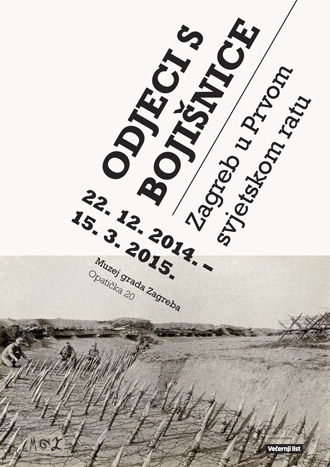 In 2014, together with the world at large, we are recalling the centenary of the outbreak of World War I or the Great War, as it is known in some countries.
In 2014, together with the world at large, we are recalling the centenary of the outbreak of World War I or the Great War, as it is known in some countries.
The exhibition Echoes from the Battlefield – Zagreb in World War I is a part of the programme and the activities of the City of Zagreb’s Commission for the Commemoration of the Centenary of the Outbreak of World War I (1914-1918). In concert with a symposium, the exhibition will be the central event marking this anniversary in the city of Zagreb.
In a year in which there was a tidal wave of all kinds of anniversary-related researches and commemorations of World War I, and bearing in mind that in this country the topic has not been researched as well as would have been expected (when one thinks of the consequences of the war to Croatian society), we found ourselves caught up in a quandary of how, as a museum institution, we should deal with this theme, or rather, how we should produce an exhibition about Zagreb in the First World War.
Notwithstanding all the difficulties that attended the project (the short deadlines, the material, human resources, funding) the expert team of Zagreb City Museum found the strength and the motivation to be able, with the help of consultants, to take on the task of producing this demanding exhibition.
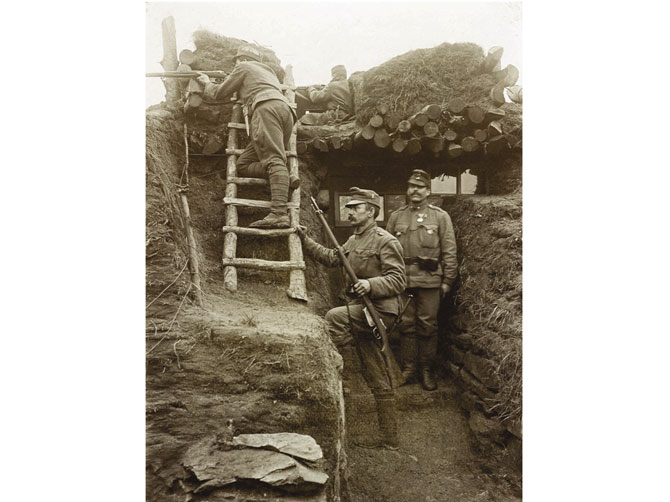
On sentry go in Horodenka, 3rd Battalion, 25th Regiment, 1917, property of Croatian State Archives
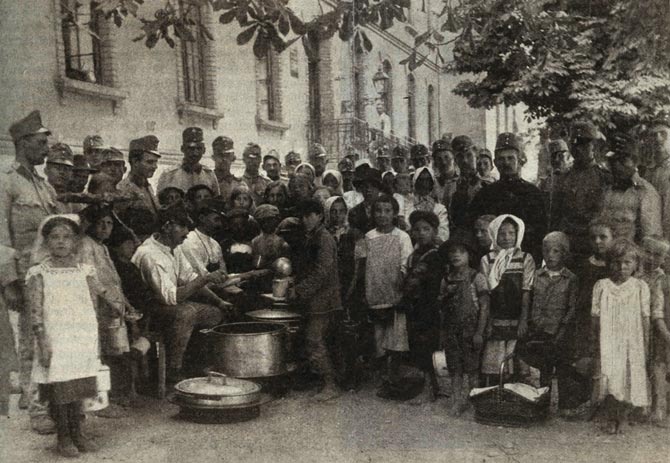
The diet of soldiers’ children, copy, Ilustrovani list, September 19, 1914
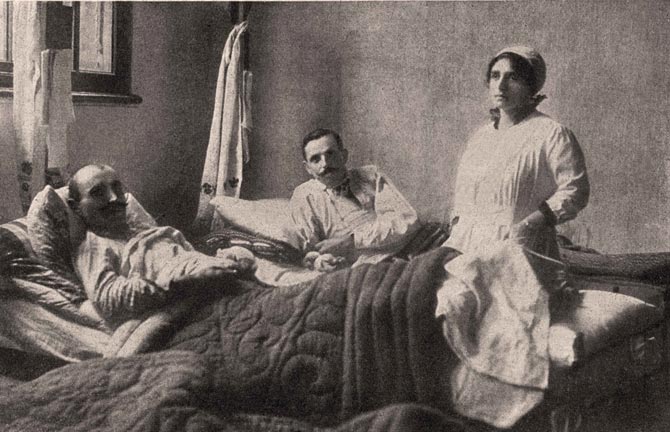
Opera singer Anka Horvat as nurse, copy, Ilustrovani list, November 14, 1914
We found inspiration, and the keynote for the exhibition, in the Museum’s own permanent display, where we had already taken up the issue of World War I with a short but moving section entitled Echoes from the Battlefield. However, this current exhibition has a much wider and more comprehensive context, and accordingly leaves space for constant supplementation, which we intend to carry out in communication with the visitors, inviting them to interaction within the exhibition thematic unit My forefathers too were involved in World War I.
Our objective, then, is not just to reconstruct past times and events, but to take a look into the fates of people, of individuals, of the immediate participants, their experiences and reflections that the Great War brought about and left, the consequences of which we can feel to this day.
In the introductory part of the exhibition we do indeed introduce the visitors and acquaint them with the Zagreb of the early 20th century. With short and clear images – with spots – we evoke the state of affairs in the economy, technology and culture, for instance, and the important political and social events. Then we come to the watershed event that triggered the beginning of the war – the Sarajevo assassination of June 28, 1914. We highlight this section in terms of space, theme and content; the central exhibit is an authentic object of the victim of the Sarajevo assassination, which we expect should be an outstanding attraction for the exhibition’s visitors.
Then comes the theme Zagreb between the assassination and the war, featuring the demonstrations and protests in Zagreb, then a short and peaceful period of ordinary life, and then mobilisation and the creation of an atmosphere of enthusiasm for the war, calls for war and the ceremonial farewells to soldiers as they left for the battlefield. We convey many of the striking events from the press of the time, particularly from Ilustrovani list.
Just a month after Sarajevo, World War I was declared, on July 28, 1914.
For the first time ever in a single place, at this exhibition we are showing the organisation, armaments, equipment and combat activities of the Zagreb war units (the 53rd Zagreb Infantry Regiment; the 25th Zagreb Landwehr Regiment; the 31st Chasseur Battalion), the battlefields on which the men perished (the Balkan, the Eastern, the South-West), the graves in which they are buried, as well as the very rare moments of relaxation in the rear echelon when the soldiers would socialise, have fun, and pray to their God.
In the first days of the war, Zagreb lived its “ordinary civic routine”, with the occasional events being marked, cinemas, theatres and concerts being visited, and cafes and taverns kept full. All this lasted but a short time, until the arrival of the first wounded in Zagreb.
The grand parades of the beginning of the war were soon replaced by cruel reality when rivers of wounded, and of starving people from all parts of Croatia, and Bosnia and Herzegovina as well, poured into Zagreb.
This was a time when the capacity of the municipal administration and the mayor of Zagreb were tested, for they had to cope with problem after problem, above all the running of a war economy, with its various constraints, supplying the population (including the introduction of rationing), requisition, call-ups, shortage of money, all of which are vividly shown at the exhibition.
Social life in Zagreb in wartime was most often to be seen in the many benefit events and charity campaigns. Images from Zagreb streets and the Zagreb quotidian illustrate the shortages, the prices, poverty, insecurity, the soldiers and wounded on the streets, orphans of the war and abandoned children. Many photographs, caricatures, archival records and museum material faithfully present a social image of the city of Zagreb, which became the rear echelon of the battlefield.
In spite of the enormous difficulties, the wretchedness and poverty in the city, life went on, and there were more pleasant occurrences too, if, in truth, on a much smaller scale – the first Croatian movie was shot, Zagreb ladies kept up with the fashions (which was condemned by some), mobilised war artists Oton Iveković, Robert Frangeš-Mihanović and Jerolim Miše and others showed exhibitions of their work.
Still, the main activities related to the humanitarian and patriotic actions “for our heroes”; alms were collected for the families of the dead and wounded. Many activists (like Milka Pogačić) and benefactors (Šandor Alexander) stood out for their hard work and charities. Benefit concerts were organised, entertainments, performances, exhibitions and sporting events – soccer matches, tennis tournaments.
Charitable associations, like the Zagreb Ladies’ Committee and the Red Cross, endeavoured, to the extent of their capacities, to help the many refugees, the children of mobilised soldiers and those who had been killed, the disabled, the wounded, the widows.
Health care for the wounded, who arrived in large numbers in the city from all the theatres of war, received particular attention. Via the press, the citizenry was invited to help, and along with regular hospitals, back up infirmaries and huts were organised, volunteer nurses looked after the wounded and the disabled.
But there were also those who never returned, who fell “for king and country”. Some of the forgotten stories about our forebears, Zagreb men who died in World War I, will be shown, with all due consideration and respect, in the exhibition.
We conclude the exhibition with the epilogue entitled – fateful decisions and events.
On October 29, 1918, the Croatian Parliament adopted a decision that all political and constitutional relations with Austria and Hungary would be broken off and that Croatia would accede to the State of the Slovenes, Croats and Serbs; there were great demonstrations of approval and support from citizens and working people on St Mark’s Square.
But at the end of November, on the 23rd and 24th, the Croatian Parliament hurriedly decided that the country should be unified with the Kingdom of Serbia. Almost at the same time, the Serbian cavalry entered Zagreb, in conjunction with a parade of the Serbian army in Ilica, and French troops on Ban Josip Jelačić Square.
The act of unification was signed by delegations of Slovenes, Croats and Serbs in Belgrade on December 1, 1918.
On December 5 that year, demonstrations were organised against unification. Croatian soldiers who had come back from the front left their barracks and together with civilians marched on Jelačić Square, where they were awaited by adherents of the National Council – that is, the forces of the government and volunteers who shot at them from the surrounding buildings. On that occasion, 13 demonstrators were killed and 17 were wounded: they are called the December Victims.
Croatia then, and Zagreb as well, saw the end of the war with huge civilian and military casualties, with economic losses, in a state of anarchy, poverty uncertainty and yet with political illusions about achieving equality in the newly created kingdom of Serbs, Croats and Slovenes, in other words, the South Slav union.
Today, in the second decade of the 21st century, thoughts of the consequences and heritage of World War I are still painful and traumatic. This marking of the centennial of the outbreak of World War I then is not just to pay our respects to the victims, but is an occasion for, a prompting of, a new way of thinking about the understanding of wars and violence, peace and coexistence.
Vinko Ivić
Pictures from the exhibition

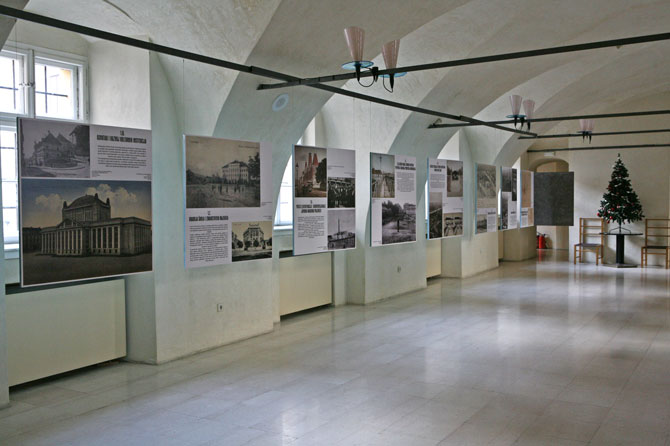


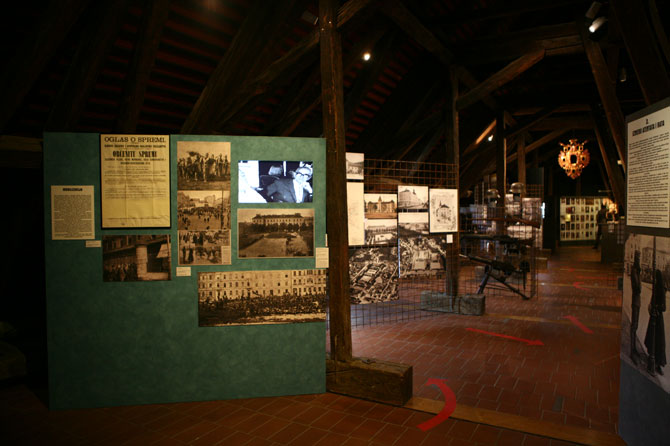
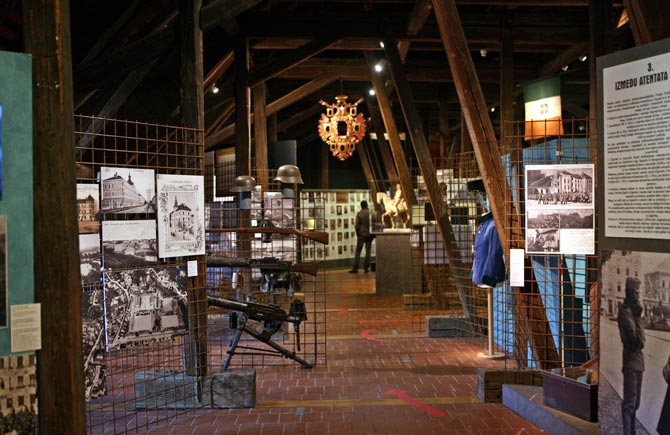

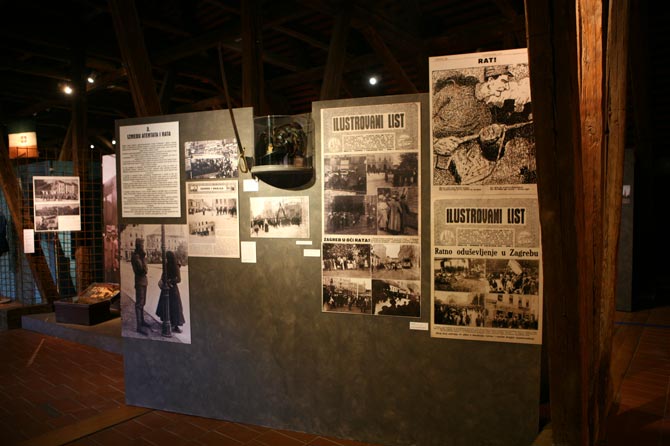
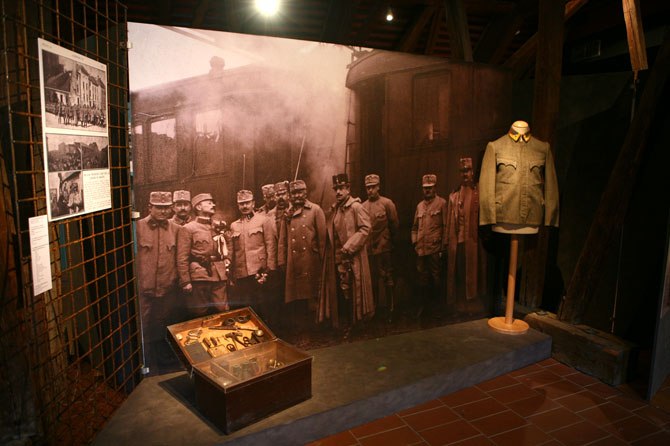

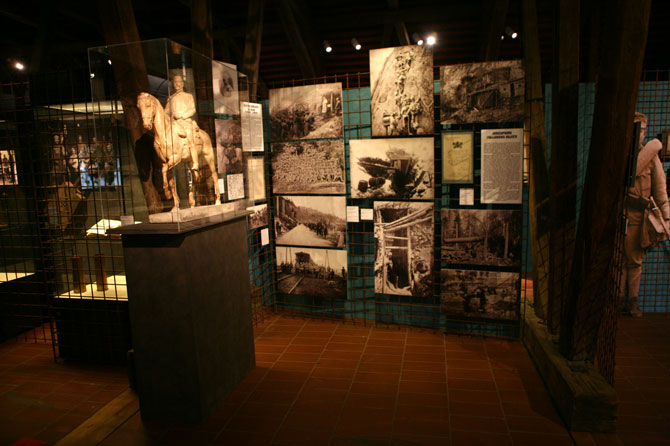


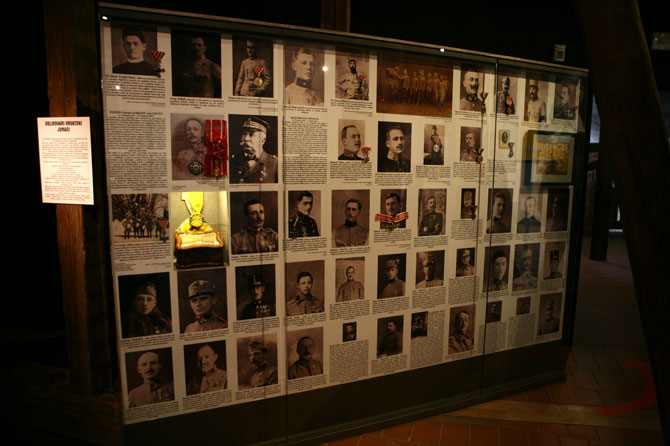
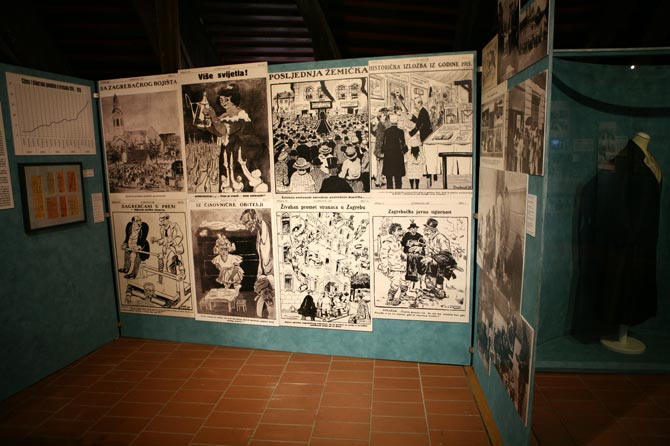


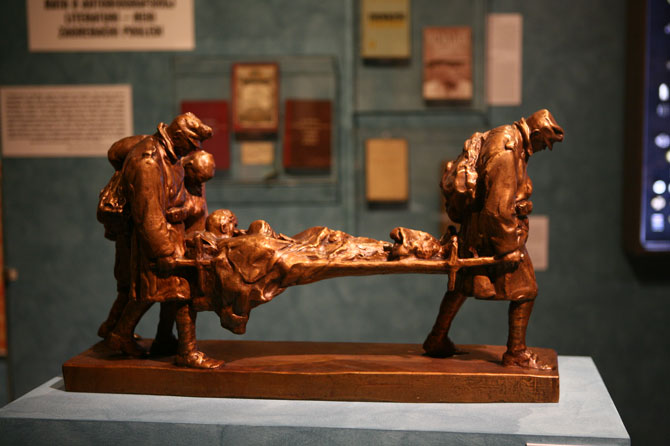


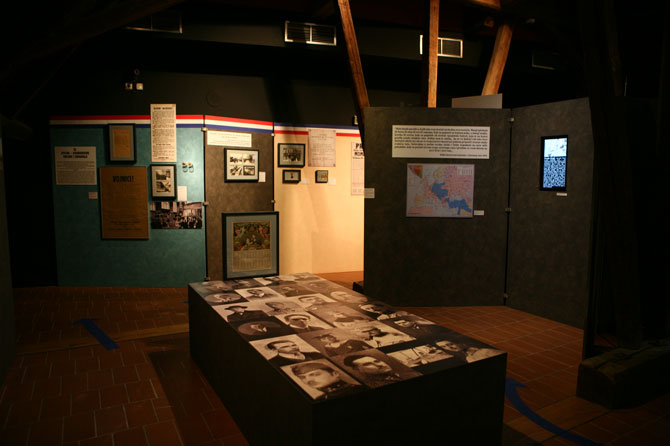
photo Miljenko Gregl, ZCM

